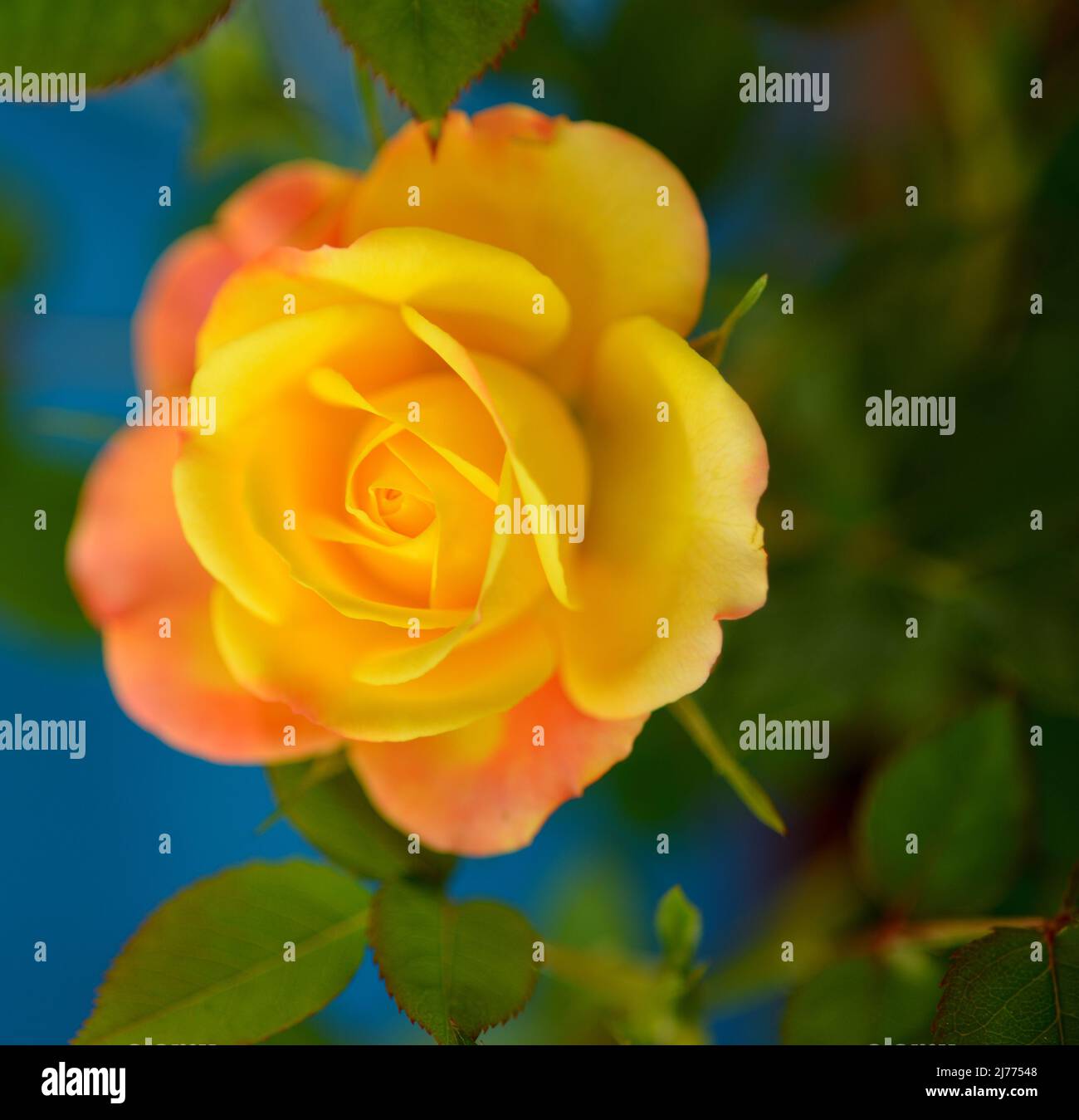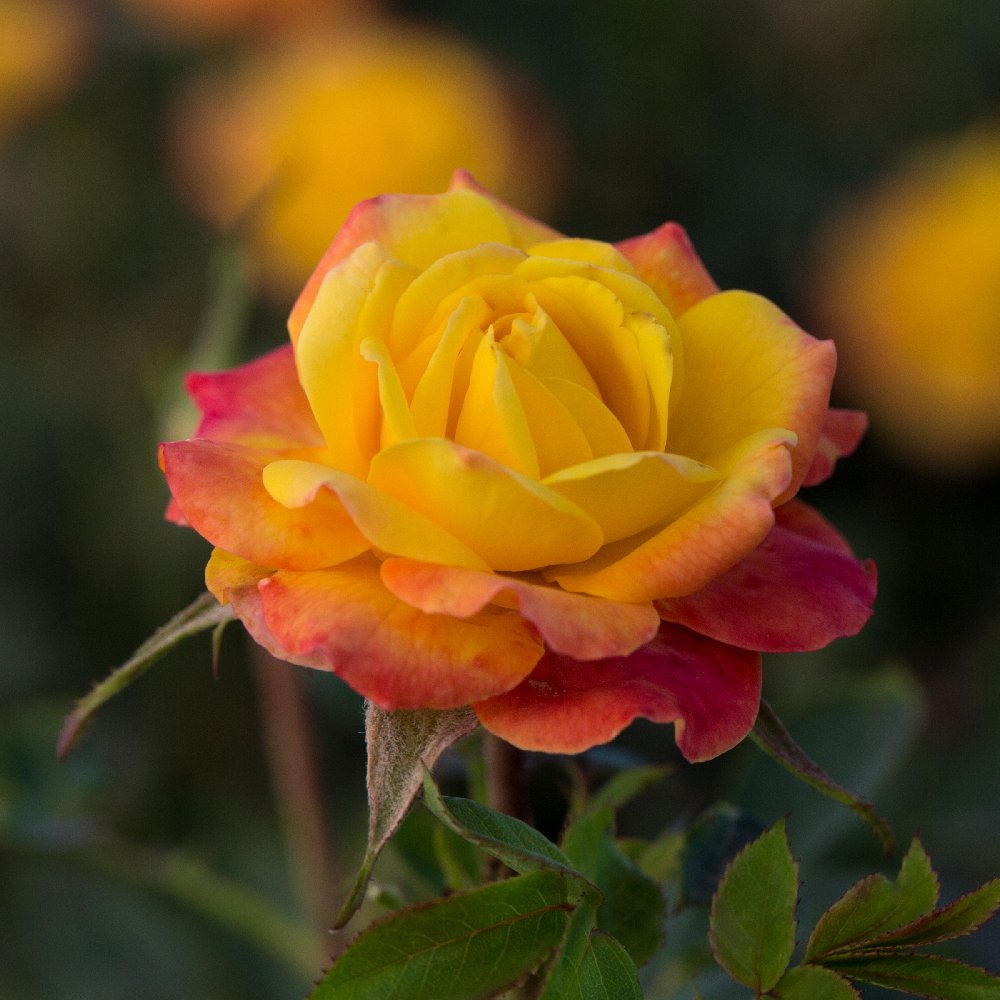

Prune your minis, if needed, in late winter or very early spring. Apply a slow-release or water-soluble fertilizer when the plant is actively growing, following directions on the label. If you keep your mini rose indoors for a long time, you’ll probably need to fertilize. If you’re using a saucer underneath, pour off any excess water. Water thoroughly when the soil feels dry about 1 inch deep. They’ll stop blooming if the temperatures drop below 50 degrees F for a while.ĭon’t let your mini rose go completely dry. Most roses are heat-tolerant, but minis do best in daytime temperatures in the low to mid-70s, with a drop to the low to mid-60s at night.
Miniature rose sunblaze rainbow windows#
If it’s too cold outside to open your windows every now and then, use a small fan to move the air around. (Don’t let the plants touch the water, or the roots may rot.) You can also mist around your plants a few times every day. Use a humidifier or put your plants on top of some pebbles in a shallow tray of water. The average home is too dry for them, which can cause their leaves to drop. Raise the humidity around your mini rose. Roses need regular periods of light and darkness, though, so don’t leave the lights on all the time. The American Rose Society recommends alternating between a cool white, a warm white fluorescent and an incandescent light at a ratio of 3 watts fluorescent to 1 watt incandescent. Can’t provide that much natural light? If you’re really serious about growing miniature roses indoors, set up some grow lights. Give your mini rose five or more hours of sun every day. But give them a little care, and miniature roses can be great, although temporary, houseplants. Most will bloom indoors for a week or two, although they'll need to be planted outdoors to get the sun and other growing conditions they need for the long run. The tiniest roses, known as micro-minis, have blooms less than an inch wide.īecause minis are so compact, they’re often sold in containers for your windowsill. Some minis-especially those with lavender or purple petals-even have a fragrance. Miniature roses, re-blooming shrubs that grow about 6 to 36 inches high, are as lovely as their full-size relatives and come in many colors and forms. In gardening, parade roses can add a petite and delightful aspect to your garden.Rose fans know bigger isn’t always better.
Miniature rose sunblaze rainbow how to#
Knowing how to care for parade roses is not any different than knowing how to care for full size roses. Pruning will also help your growing parade roses keep a bushy, full shape. Prune the whole plant back by one-third to encourage another round of blooming.

You can also prune shortly after the plant has finished blooming. Prune in the spring to remove dead or diseased canes.


Just like with other kinds of rose gardening, parade roses need regular pruning. Making sure that you’re growing parade roses in the best conditions possible will help prevent these diseases. Like the larger variety, proper parade roses care resources say that you should provide plenty of fertilizer, as roses of all kinds are heavy feeders.Īnother thing to consider when learning how to care for parade roses is that outdoors they are susceptible to black spot and blight. Be sure that they get plenty of water but also that they have good drainage as well. Plant them in full sun for the best display. Growing parade roses is much like growing full size roses. There are many, many more varieties available beyond this for gardeners to grow. These petite roses come in as many colors and variations as their larger sisters. Parade roses are essentially miniature roses. Growing parade roses is easy to do and will add something fun to your garden. In the world of gardening, parade roses are not frequently used, which is a shame as they can be a delightful and whimsical addition to any garden.


 0 kommentar(er)
0 kommentar(er)
